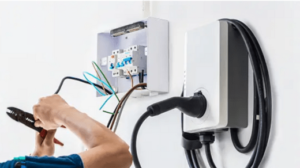how to build a temporary vestibule
Building a temporary vestibule typically involves creating a simple, weatherproof structure that serves as an entryway or a transition space. This can be done using a few basic materials and tools. Here’s a step-by-step guide to build a basic temporary vestibule:
Materials Needed:
- Tarp or heavy-duty plastic sheeting
- PVC pipes or metal poles
- Connectors for pipes/poles
- Hammer or mallet
- Nails or straps for securing the tarp
- Bungee cords or zip ties
- Ground anchors (optional, for stability)
- Tent stakes
Steps:
- Choose a Location:
- Select a suitable location for the temporary vestibule near the entrance you want to cover. Ensure the ground is level and free of obstructions.
- Measure and Plan:
- Measure the area where you want to set up the vestibule. Plan the dimensions and height according to your needs.
- Assemble the Frame:
- Use PVC pipes or metal poles to create a simple frame. Connect the pipes/poles using the appropriate connectors to form a rectangular or square shape, resembling the structure of a tent.
- Secure the Frame:
- Hammer the poles or drive them into the ground a few inches to provide stability. If needed, use ground anchors or tent stakes to secure the frame.
- Cover with Tarp:
- Drape the tarp or heavy-duty plastic sheeting over the frame to create a roof and walls. Ensure the tarp adequately covers the frame and reaches the ground on all sides.
- Secure the Tarp:
- Use nails, bungee cords, or zip ties to secure the tarp to the frame securely. Make sure the tarp is tightly and evenly stretched over the frame.
- Add Weight for Stability:
- Place heavy objects or sandbags around the base of the vestibule to provide additional stability, especially if you’re using it in windy conditions.
- Create an Entryway:
- Leave an opening in the tarp to serve as the entrance. Fold or secure the tarp at the desired height to create a door-like flap that can be easily lifted.
- Test and Adjust:
- Walk in and out of the vestibule to ensure it’s functional and stable. Make any necessary adjustments to improve its stability or usability.
- Personalize and Arrange:
- Customize the interior of the vestibule according to your needs. You can add mats, hooks, shelves, or seating to make it more functional and comfortable.
A temporary vestibule can be a valuable addition, providing shelter and a transition space for various purposes, including protecting an entrance from the weather or creating a temporary waiting area. Adjust the size and features based on your specific requirements.








